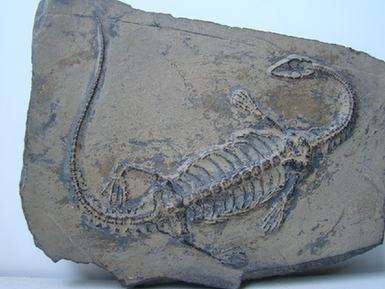(单词翻译:单击)
In these very old rocks, paleontologists have found something that looked familiar.
在这些古老的岩石中,古生物学者发现了一些熟悉的东西。
Certain communities of microbes can form layered, rock-like mounds called stromatolites.
某些菌落可以形成一层一层,岩石状的土丘,被叫做叠层石。
Stromatolites grow in shallow bodies of water in many places around the world.
世界上有很多地方的浅水区都存在着叠层石。

In the 1980′s paleontologists found the remains of ancient stromatolites in 3.5 billion year old sedimentary rocks.
在20世纪80年代的时候,古生物学家在35亿年的沉积岩里发现了古叠层石的遗骸。
Besides stromatolites, possible microscopic fossils have been found in rocks up to 3.5 billion years old.
除了叠层石外,其他目前在岩石中已经找到的可能的微观化石已经有长达35亿年的历史了。
While the origin of these tiny structures is still intensely debated, many scientists are convinced that they are the remains of microorganisms.
虽然关于这些微小结构的起源还存在着严重的分歧,但很多科学家已经确认,他们是微生物的残骸。
It appears that by at least 3.5 billion years ago, the oceans were teeming with life, and that the land was also colonized by microbes very early in Earth's history.
似乎在地球演变的早期过程中,至少在35亿年以前,海洋里存在着大量生体命,而陆地是微生物的主要栖息地。
译文为可可英语翻译,未经授权请勿转载!


